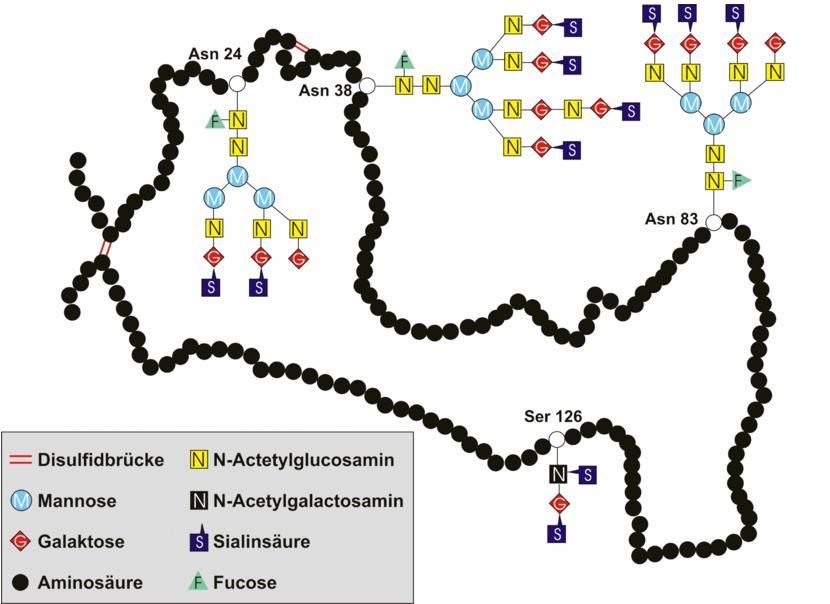Erythropoetine is glycoproteine that along with carbohydrate
component contains 165 amino-acids in its composition. Erythropoetine is an
endogene substance, that is in normal conditions synthetized mostly by activity
of renal tissue. Uncompareble lower production comes from other tissues(liver).
Basic function of this glycoproteine is stimulation of the erythropoesis
process(erythrocyte production) in bone marrow. If organism creates huge
amounts of erythropoetine, erythrocyte production can be 8-10 times bigger than
normal. Erythropoesis
stimulation by the influence of this substance, is mostly done on the level of
pracell and bone marrow haemmocytoblast. Hard renal disease or missing of
these organs are followed by hard types of anemia.
Today erythropoetine, by appliance of specified
technologies, is synthetized on animal tissues and cell culture. The discovery
of this type of erythropoetine, that is identic to endogene, solved problems
with anemia.
Erythropoetine is allowed on market since 1985.
Appliance
in sports
Appliance of synthetized erythropoetine in
sport started in 1989. It is thought
that huge number of athletes use this substance, especially in endurance
sports. In soccer, this substance is used if there is a long-lasting league
that lasts for more than 3 months per half-season, with tight schedule. These
type of abuse is sometimes done with doctor assistance. These players usually
have abnormal aerobic endurance and aerobic values. Out of soccer, this
substance is mostly used in cycling, by some researches even 60-70% of cyclers
use this substance.
These substance is applied 6-8 weeks before important sports competition. After one week of
use stop, erythropoetine use is impossible to be proved. There is also other
type, when this substance is taken in
the start of the season. As season goes further and further, this player’s
stamina constantly grows.
It is thought that erytropoetine abuse
increases erythrocytes number 15-20%. Result is increase in capacity of blood
for oxygen transport of approximately 6-8%.
Harmful
effects
All harmful effects are the result of increased viscosity and blood
hematocrit, with all consequences that follow these disorders. The biggest
health damages that can be made are heart
and brain attack.
Detection
There
is not yet the test that can 100% determine presence of erythropoetine in
blood. One of the most used tests is determination of hematocrit and
haemoglobine concentration in blood. It is thought that average hematocrit at
grown male is 38-46, and in some competitions top limit is 50. Values over 50
are conformation of erythropoetine use.
As top limit for haemoglobine concentration in
plasma is intaked value of 16g/dl for
women, and 18.5g/dl for males, athletes. It is known that altitude
preparations can be very effective in increase of erythrocyte level. However,
to determine true haematocrit value, blood should be taked from an athlete in
the morning, before breakfast, in sitting position.
Direct technique is electrophoresis. Indirect
techniques that are performed today, have a goal to determine value on base of
erythrocyte volume and haemoglobine composition inside of them.
“Doping in sport”, Marina Djordjevic Nikic










0 коментара:
Постави коментар